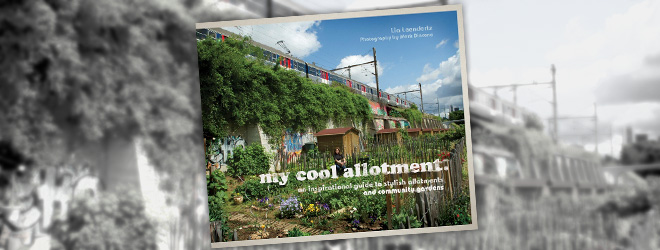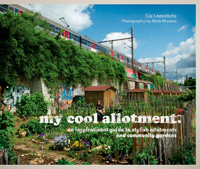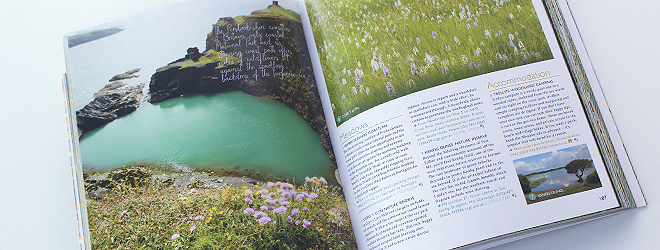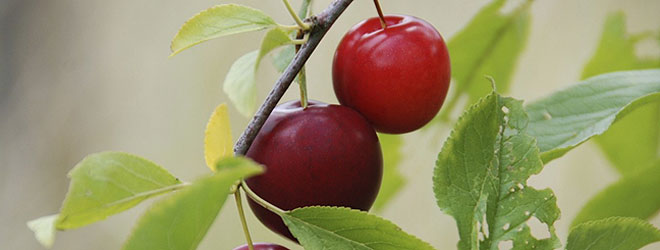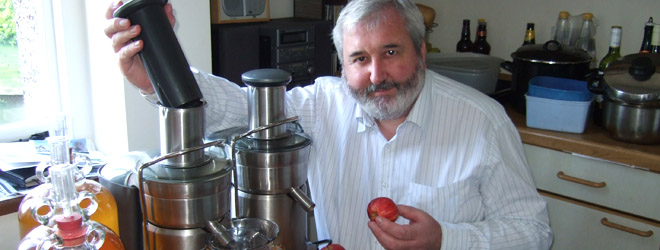Lia Leendertz is a Bristol based author who has written numerous books and magazine articles on gardening. We caught up with her to find out more about her latest book, ‘My Cool Allotment’, and how she spends time on her own plot…
Your new book, ‘My Cool Allotment’, takes a look at some of the most beautiful and unusual allotments in the UK and Europe. How did you decide on which ones to include?
Mark Diacono – the book’s photographer – and I trawled through a vast list of potential sites that we found through recommendations, magazine articles, the internet, anonymous tips offs from mysterious men in shades on street corners… We had to work out from snaps and descriptions which would be worth visiting, and I think we made the right choices in the end.
You must have met some interesting characters on your journey?
Allotments seem to breed interesting characters all right. Luigi Valducci is one of the big ones that springs to mind, an Italian who keeps a national collection of brugmansias on one of several plots on his Shrewsbury site, and peppers the site with homemade signs featuring gardening homilies. A man of strong opinions and an amazing allotment. And Glandel Archer, a Jamaican grower in Birmingham who we both rather fell for. He gardens by the moon, growing pumpkins, okra and callaloo to hand out to Jamaican friends. I found him a very warm and knowledgable man, once I had got my ear in, patois-wise.
And some unusual veg too? Are there any discoveries you’ll be growing on your own plot?
Pheerya Hill in Devon is possibly the grower of the most unusual veg we found. She is from Thailand and grows as many Thai crops as she can in her greenhouses, but is also incredibly resourceful: where she has found crops such as ginger and turmeric that struggle to ripen fully here, she harvests the leaves and uses them in her cooking. Same flavours, far less warmth and sunshine required. I’m going to certainly give these a go in my greenhouse.
What do you think makes allotments such special places?
They are a funny mix of public and private. You can be entirely alone on your plot just by employing the right kind of body language, or it can be the most sociable thing. I like how we all dip in and out of these comfortable conversations with almost perfect strangers, about bean set, and late frosts, and blighty weather. It’s an easy community to be a part of.
And how do you think allotments have changed over the years?
They are definitely turning more female, for a start. They are no longer the preserve of the old boys, but I did enjoy visiting some of the traditional plot holders for this book: Arthur Scott is a plot holder on the oldest allotment in the country, and does everything perfectly: straight lines and not a weed in sight, and Brian Carter has an allotment chock full of the most beautiful exhibition dahlias. I also met those plot holders that are looking for more alternative, sustainable ways of growing, such as Alys Fowler who uses permaculture techniques on her Birmingham allotment. It was good to see the future of allotment growing in some of the more alternative plots.
How does your own allotment shape up? Any growing triumphs or disasters you can share with us?
My allotment is in the book, partly to tell the tale of near disaster. My husband and I have had the plot for about eight years, and managed to keep it going through having two babies, which is quite a feat. But a few years ago he got ME and we nearly had to give it up. Instead we asked a few friends to share the plot with us, and we now have a lovely, sociable shared plot where the children get to play with their friends and we get to see our friends and get some work done too.
Besides writing books you write for a number of papers and magazines, run a supper club, and perform in a band. How do you find the time for allotmenteering, particularly during the busy months?
We always go up on a Sunday morning, all of us together. It’s set in stone. It’s not enough to keep it at its best but there are four of us adults so if we get stuck in we can get quite a lot done in that time. My husband (he’s much better now) will then often pop up a couple of times in the week too, and we do all our propagation in the greenhouse at home, in between band practices, supperclubs and all!
And, finally, do you have any tips for aspiring grow-your-own writers?
I think my best tip would be to start a blog, make it different to what’s out there, find your own voice and interests. Every editor likes a writer with a niche, so find what you really love, do it well, and write about it. Just last week a book publisher told me that if she is looking for an author for a title she has in mind, she will start by googling and looking at blogs, so it’s a good way to be seen, but also to develop your writing.
Click here to order a copy of ‘My Cool Allotment’
Vists Lia’s website here


